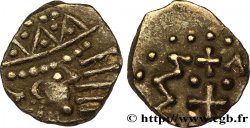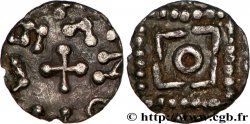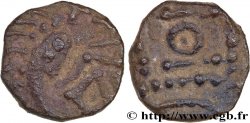bmv_318772 - INGHILTERRA - ANGLOSASSONE Denier au quatre-feuilles
non disponibile.
Articolo venduto sul nostro negozio (2014)
Prezzo : 290.00 €
Articolo venduto sul nostro negozio (2014)
Prezzo : 290.00 €
Tipo : Denier au quatre-feuilles
Data: c. 710-750
Nome della officina / città: Frise, Maastricht
Metallo : argento
Diametro : 13 mm
Peso : 1,3 g.
Grado di rarità : R3
Commenti sullo stato di conservazione:
Denier sur un flan large, avec des types complets, bien centrés et de frappe vigoureuse, mais sur un flan de bas aloi en billon. Patine grise avec des zones vertes
N° nelle opere di riferimento :
Diritto
Titolatura diritto : ANÉPIGRAPHE.
Descrittivo diritto : Buste diadémé à gauche, le cou perlé ; une croix latine devant le visage et trois globules posés en triangle derrière la nuque.
Rovescio
Titolatura rovescio : ANÉPIGRAPHE.
Descrittivo rovescio : Quatre-feuilles cantonné de trois globules en triangles.
Commento
Cet exemplaire est très proche du n° 1208 de MONNAIES 43, mais est particulièrement lourd !
Malgré les diverses attributions proposées, dans son Numéraire Mérovingien G. Depeyrot ne se prononce pas en mettant les monnaies de ce type dans une série typologique “entrelacs au revers” (cf. pl. 30). Il précise, page 175, que ces “deniers aux entrelacs seraient attribués à Poitiers par d’Amécourt (B. 5995). Pour J. Lafaurie (RN 1996) ces monnaies seraient à attribuer à Maastricht”. La précision selon laquelle pour d'Amécourt “le quatrefeuille doit être attribué à Auxerre et le trèfle à Poitiers” semble assez simpliste (cf. Belfort tome IV, page 281).
This example is very close to number 1208 of MONNAIES 43, but is particularly heavy! Despite the various attributions proposed, in his Numéraire Mérovingien G. Depeyrot does not take a position by placing coins of this type in a typological series “interlacing on the reverse” (cf. pl. 30). He specifies, page 175, that these “deniers with interlacing would be attributed to Poitiers by d'Amécourt (B. 5995). For J. Lafaurie (RN 1996) these coins would be attributed to Maastricht”. The clarification according to which for d'Amécourt “the quatrefoil should be attributed to Auxerre and the clover to Poitiers” seems rather simplistic (cf. Belfort volume IV, page 281)
Malgré les diverses attributions proposées, dans son Numéraire Mérovingien G. Depeyrot ne se prononce pas en mettant les monnaies de ce type dans une série typologique “entrelacs au revers” (cf. pl. 30). Il précise, page 175, que ces “deniers aux entrelacs seraient attribués à Poitiers par d’Amécourt (B. 5995). Pour J. Lafaurie (RN 1996) ces monnaies seraient à attribuer à Maastricht”. La précision selon laquelle pour d'Amécourt “le quatrefeuille doit être attribué à Auxerre et le trèfle à Poitiers” semble assez simpliste (cf. Belfort tome IV, page 281).
This example is very close to number 1208 of MONNAIES 43, but is particularly heavy! Despite the various attributions proposed, in his Numéraire Mérovingien G. Depeyrot does not take a position by placing coins of this type in a typological series “interlacing on the reverse” (cf. pl. 30). He specifies, page 175, that these “deniers with interlacing would be attributed to Poitiers by d'Amécourt (B. 5995). For J. Lafaurie (RN 1996) these coins would be attributed to Maastricht”. The clarification according to which for d'Amécourt “the quatrefoil should be attributed to Auxerre and the clover to Poitiers” seems rather simplistic (cf. Belfort volume IV, page 281)







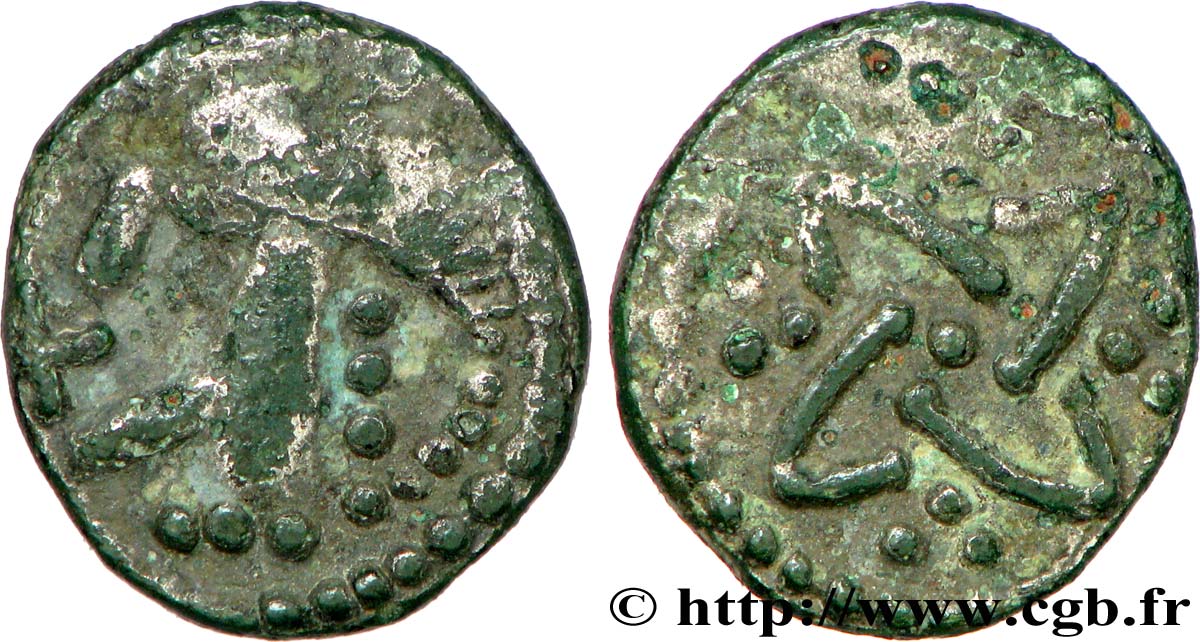
 Segnalare un errore
Segnalare un errore Stampate la pagina
Stampate la pagina Condividi mia selezione
Condividi mia selezione Fai una domanda
Fai una domanda Consegnare / vendere
Consegnare / vendere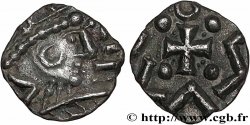
 Descrittivo
Descrittivo